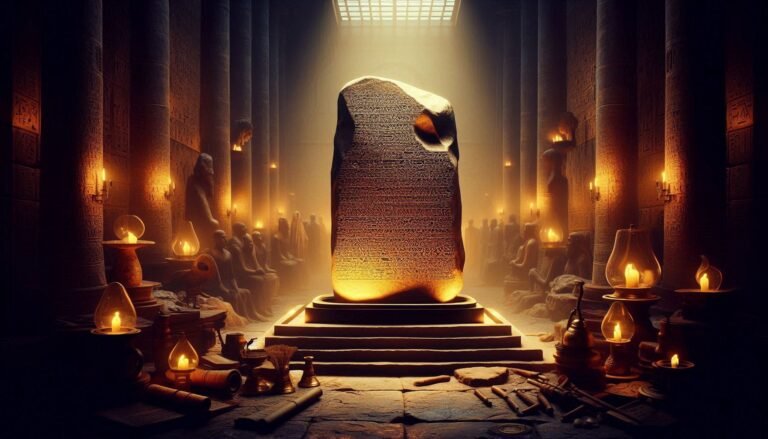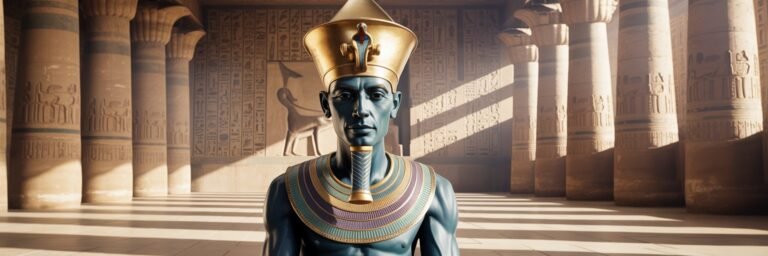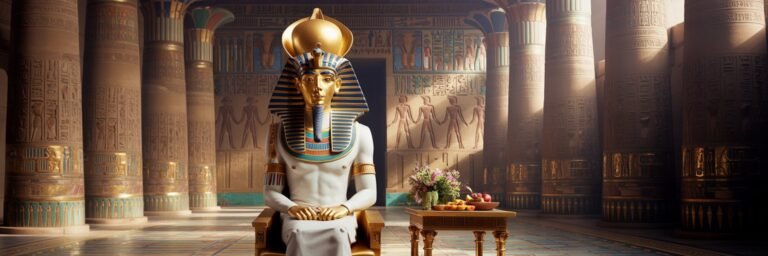The Great Sphinx of Giza is one of the most iconic and enigmatic monuments of ancient Egypt. Standing at 66 feet tall and 240 feet long, this colossal limestone statue with the body of a lion and the head of a human has puzzled historians, archaeologists, and scholars for centuries. Despite its prominence, many questions remain unanswered: Who built it? What is its true purpose? And what lies beneath its massive frame?
Theories About Its Origin
The prevailing belief among Egyptologists is that the Great Sphinx was constructed during the reign of Pharaoh Khafre (circa 2558-2532 BCE) as part of his pyramid complex. This theory is based on the proximity of the Sphinx to Khafre’s pyramid and the resemblance between its face and his statues. However, some scholars argue that the Sphinx may be far older than traditionally thought.
Alternative theories suggest that the erosion patterns on the monument are evidence of prolonged exposure to heavy rainfall, which would place its construction as early as 10,000 BCE—long before the first known Egyptian civilization. Supporters of this theory, such as geologist Dr. Robert Schoch, believe that the Sphinx may have been built by a lost civilization and later adopted by the Egyptians.
What Lies Beneath the Sphinx?
One of the most intriguing aspects of the Great Sphinx is the possibility of hidden chambers and tunnels beneath it. Over the years, various studies have suggested that there may be undiscovered passages and rooms within or beneath the monument.
- Seismic Studies: In the 1990s, researchers using ground-penetrating radar and seismic tests detected anomalies beneath the Sphinx. These findings led to speculation that there could be hidden chambers or tunnels, possibly containing lost relics or ancient knowledge.
- The Hall of Records: According to legend, the Hall of Records—a vast library containing the wisdom of an advanced ancient civilization—lies beneath the Sphinx. This theory, popularized by mystics such as Edgar Cayce, suggests that the chamber holds records from the lost city of Atlantis. Although no definitive proof has been found, the idea continues to fuel speculation and exploration.
- Recent Excavations: Some researchers claim that existing tunnels and cavities around the Sphinx may have been used for maintenance or religious ceremonies. However, Egyptian authorities have restricted access to many areas, keeping the mystery alive.
Theories on Its True Purpose
While the Sphinx is often thought to be a guardian of the Giza Plateau, its true purpose remains uncertain. Some theories suggest it played a role in ancient Egyptian religious practices, while others propose more unconventional explanations.
- A Solar Symbol: Some scholars believe the Sphinx was a representation of the sun god Ra-Horakhty and was positioned to align with the rising sun on the vernal equinox.
- A Guardian of Sacred Knowledge: In ancient Egyptian texts, the Sphinx is associated with protection. Some believe it was built to safeguard hidden knowledge or sacred tombs.
- A Portal to the Afterlife: Another theory suggests that the Sphinx played a role in religious rituals related to the journey of the soul in the afterlife, serving as a guardian of divine secrets.
- An Astronomical Marker: Some alternative researchers claim that the Sphinx, along with the pyramids of Giza, aligns with specific celestial bodies, possibly linking it to a lost civilization with advanced astronomical knowledge.
The Erosion Controversy
A major debate surrounding the Sphinx is the nature of its erosion. Traditional archaeologists argue that the damage is caused by wind and sand erosion over thousands of years. However, geologist Dr. Robert Schoch proposes that the deep vertical fissures on the Sphinx indicate water erosion, which would require prolonged heavy rainfall—an event that hasn’t occurred in Egypt since around 10,000 BCE. If true, this would drastically alter our understanding of the origins of the Sphinx and human civilization itself.
The Lost Nose and Other Damage
One of the most famous features of the Sphinx is its missing nose. Various stories exist about how it was destroyed:
- Napoleon’s Troops: A popular myth claims that Napoleon Bonaparte’s soldiers shot off the nose with a cannonball in the early 19th century. However, sketches from the 18th century show the Sphinx already missing its nose before Napoleon’s campaign.
- Sufi Iconoclasm: Historical accounts suggest that a Sufi Muslim named Muhammad Sa’im al-Dahr defaced the Sphinx in the 14th century, believing it to be an idol. This act allegedly led to his execution.
- Natural Erosion: Some experts argue that the missing nose is simply the result of centuries of weathering and gradual erosion.
Modern Investigations and Ongoing Mysteries
Despite advances in technology, the Great Sphinx continues to keep many of its secrets hidden. Recent efforts to scan the area with high-tech equipment have revealed further anomalies beneath the surface, but full excavation remains a challenge due to the monument’s delicate condition and restrictions imposed by Egyptian authorities.
As new discoveries emerge, the Sphinx’s true origins and hidden secrets may one day be revealed. Until then, it remains one of history’s greatest unsolved mysteries—an ancient riddle written in stone, waiting for the world to unlock its secrets.
The Great Sphinx of Giza stands as an enduring testament to the ingenuity of ancient civilizations. Whether it is a relic of lost knowledge, a guardian of sacred wisdom, or simply a grand monument to a pharaoh, it continues to inspire awe and speculation. The question remains: What else lies beneath this ancient wonder?






